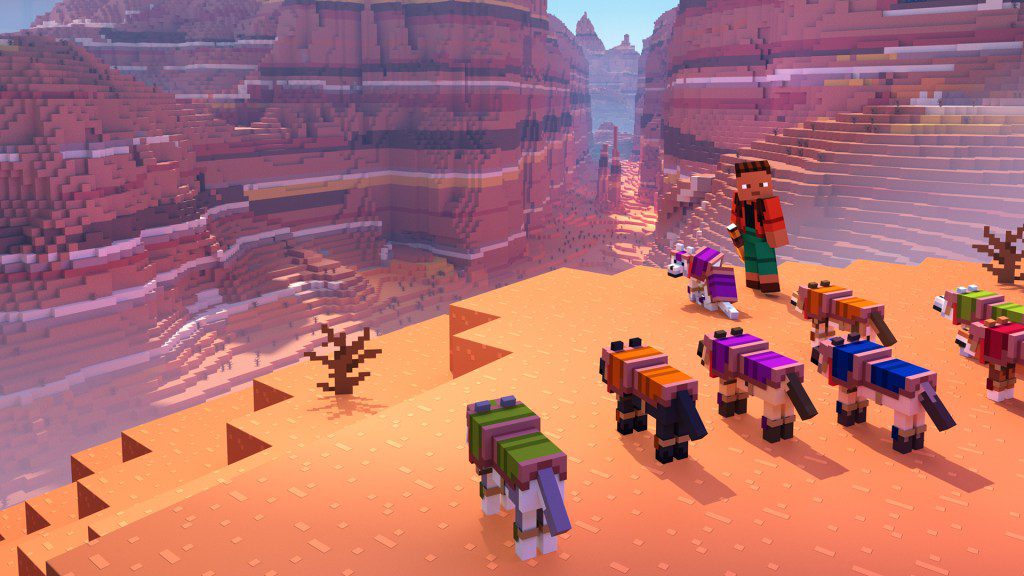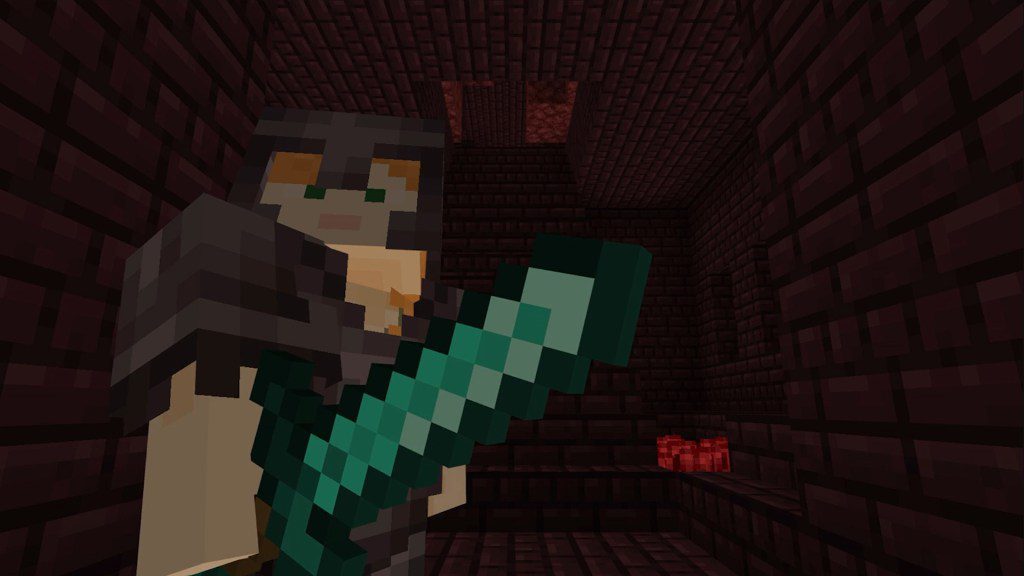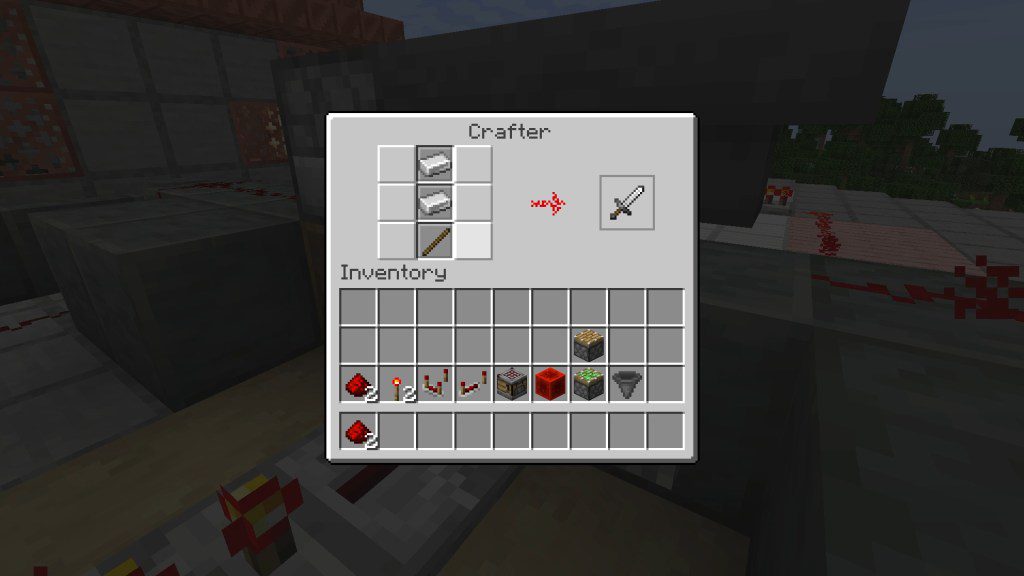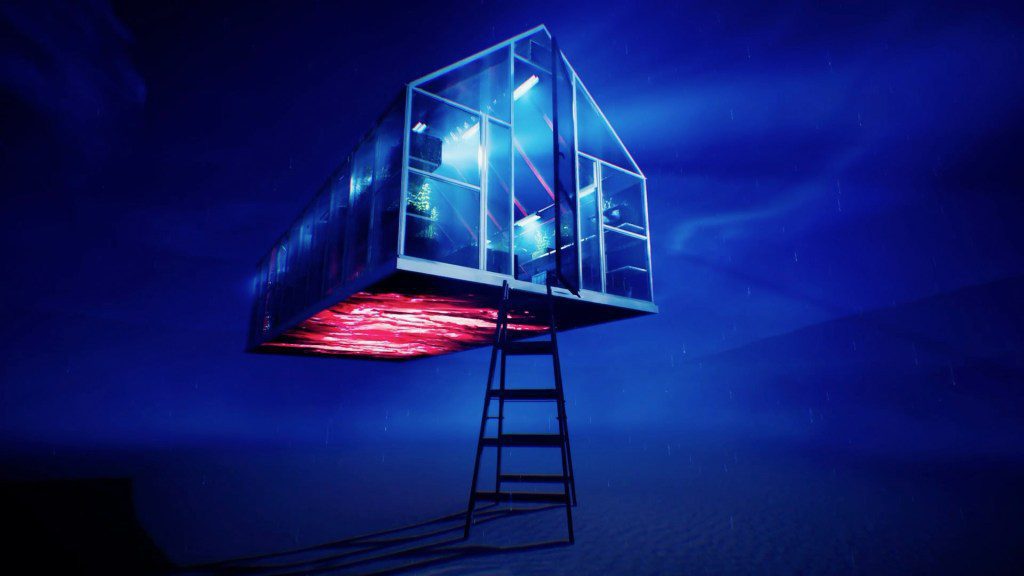How ‘Minecraft’ Conquered Gaming and Beyond
It’s not an overstatement to say that Minecraft has taken over the world. Since launching in 2011, it’s become ubiquitous; Whether it’s on consoles, computers, mobile phones or tablets — the reach of Minecraft is inescapable. It’s played almost equally by men and women, and is about as popular with kids who were born after its launch as with those who are old enough to recall Y2K. As of Oct. 2023, over 300 million copies of the sandbox game have been purchased, putting it well ahead of Grand Theft Auto V’s (2013) 210 million.
What started out as a prototype to test randomly generated cave systems built by a single man, Markus “Notch” Persson, was sold to Microsoft in 2014 for a whopping $2.5 billion. It’s so popular that it now joins the ranks of Mario and Sonic as blockbuster Hollywood IP with the release of this week’s A Minecraft Movie.
But what exactly is Minecraft? Why do so many spend hours watching people building and fighting in it? And how has it remained relevant for almost 15 years? Rolling Stone spoke to some of the world’s most popular Minecraft content creators to learn more about how the game’s endless appeal has kickstarted a creative renaissance, more than a few careers, and multiple brand-new industries.
A whole new world
Every time a player starts a new game of Minecraft, a unique world is generated in seconds, untouched and never-before-seen. Rather than aiming for photorealism, everything in Minecraft, from the ground to the trees to the animals to the sun and moon themselves, is represented by large, chunky blocks. It’s a simple aesthetic that evokes childhood memories of playing with Lego bricks.
Players have to gather resources by punching a tree to get a piece of wood, and from there they can craft simple wooden tools like pickaxes and spades. The gameplay loop is simple yet hypnotizing. Players start with wood, then mine stone, then they have to find and smelt iron, and from there they can delve deep into the game’s caves to gather the most valuable resource of all: diamonds. Each tool upgrade mines faster and lasts longer before breaking, encouraging players to keep pushing to keep themselves equipped with the best gear. But why do they bother?
Minecraft has over 204.33 million monthly active players as of December 2024
Xbox Games Studios
Minecraft is what’s known as a sandbox game. There’s no set objective, but players can use the game’s world and the resources in it to do almost anything they can think of. The most obvious thing to do in Minecraft is build a house out of wood and stone, but players can also create functioning machines, trade with non-player characters (NPCs), and even build working circuitry. Someone actually made a playable version of Minecraft within Minecraft.
The game also has some built-in objectives. There are three realms the player can explore: the normal overworld, the Hell-inspired fiery Nether, and the End, where a giant dragon roams — the final boss of the game. There are some optional bosses too, the Wither and the Warden. These features have all been added to the game over the years. Players first got their hands on it in May, 2009, and then an alpha and beta version followed before the full 1.0 release in 2011. It’s now in version 1.20.2, or about 25 large-scale iterations since it was first released to the public with dozens of smaller tweaks and changes along the way.
Each new update added more depth to the game. From more types of materials players could use to build and decorate to more animals that inhabited the world to more biomes for players to explore. There are desert badlands, frosty tundra, underwater temples, shipwrecks, lush caves teeming with life, and much more.

As the game has evolved, so have the visuals — yet always retaining the signature blocky aesthetic.
Xbox Games Studios
Daniel “RTGame” Condren is one of Ireland’s biggest Twitch streamers (with 1.2 million followers) and a successful YouTuber (2.88 million subscribers). He’s been playing Minecraft since its beta in 2010.
“It was a different time,” says Condren of Minecraft’s beta days. “They were still trying to figure out what the game was going to be.”
“A creative force for good”
Minecraft has two main modes of play: survival and creative. In survival mode, players have to fend off attacks from enemy creatures like zombies, giant spiders, and skeleton archers that come out at night, almost turning it into a horror game. “It was surprisingly hostile for a block game,” says Condren.
Creative mode removes the hostile enemies and grants players godlike powers. They can fly around the map and have access to infinite amounts of every block and tool in the game. This mode is favored by those who like to build grand structures without the pressures of fighting for their life and the grind of mining all the resources they need. People have recreated famous landmarks like the Eiffel Tower, Statue of Liberty, Pyramids of Giza — if it’s a notable building in the real world, players have built it. This is where RTGame’s Minecraft videos really shine.
He’s built a career as a variety gamer, playing everything and anything, but he’s infamous for his videos where he gives his Twitch community a set of building materials and watches while they make absurd creations. He’s more of a cameraman and narrator than an active participant. He’ll simply fly around and have a look at what people are building based on whatever creative prompt he came up with. With titles such as, “Building A Wholesome Family Restaurant / Brutal Regime” and, “I Trapped 100 Minecraft Players Underground and Forced Them To Build A Fallout Vault”, it’s easy to see how he earned a reputation.
“It’s true, I’ve committed terrible atrocities in a lot of my videos,” he laughs. “I remember quite early on I literally trapped them [players from his Twitch community] in a cave underground and they built a thriving community out of it and still persevered and made a story for themselves out of it.”
The stories RTGame and his chat create and the interactions he has with them while playing the role of “cameraman” are what he and his community love about the game. During one of the COVID-19 lockdowns, he tasked people with building the Earth at about 1:4,000 scale and was shocked by the results.
“It became this really cool, culturally significant work where a lot of people would contribute to their own country’s history,” he explains. What’s more, people were learning about other cultures and regions to help build them up too. “I’d just see parts of the world and hear stories that I otherwise wouldn’t. Stories [about a] nation’s independence and historical moments. To have that represented in [a] ‘virtual Lego game’ is quite surreal.”
World maps are incredibly political; if part of the sea is named for one country instead of another or a contested border is drawn favoring one side, they can become international incidents, but RTGame’s community seems to have navigated it well. “We did actually have representation for Palestine and Palestinian history when we were building the server, which was very heartwarming to see,” he says. “Speaking as an Irishman there’s some parallels in that too [with] our own history.”

The Sydney Opera House constructed in Minecraft by creator MinecraftRepro.
Xbox Games Studios
One of the most impressive projects within Minecraft is the Uncensored Library. It’s a giant virtual archive made by Reporters Without Borders, filled with books and texts that have been banned around the world. “It’s oddly powerful as a means of protest,” Condren says. “Probably not something that was envisioned when Minecraft had been set up, but here we are. I love it. I think it’s one of the most valuable video games we have. I think it’s something we should champion as much as possible, especially for kids, because it is a creative force for good. There really isn’t anything quite like it.”
The virtual high school cafeteria
While Condren enjoys Minecraft because of how he can interact with his community and the unique forms of protest it offers, some prefer to play in solitude. Some forgo the simulation and survival element in favor of simply building. Others, like Tom “TommyInnit” Simons, the biggest Minecraft streamer in the world with 7.3 million followers on Twitch, prefer to play with other content creators to provide their audience with laughs. He’s even gone on to become a successful stand-up comedian.
“You know [how] people talk about the meta-reality? That, to me, is already what Minecraft is,” says Simons. “It’s so simple and yet has an impossible amount of depth to it. It can just be anything.”
Simons is known for playing on survival multiplayer servers, SMPs for short. The one he’s most famous for is the Dream SMP, started by content creator Dream and populated with other YouTubers and Twitch streamers. These are typically invite-only and closed off to the public. They’re the perfect playground for people looking to make a career out of Minecraft, because their communities get to see new faces and see how their favorite creators interact.
“Imagine a school cafeteria where you go in each day and you don’t know who’s gonna be in there and then you all cross paths,” Simons explains. Each SMP has different players, rules, and their own uniquely generated Minecraft world, so although they’re all similar, no two are quite the same.
But why do so many people watch creators in SMPs? According to Twitch’s chief monetization officer Mike Minton, in 2024 Minecraft alone accrued “379 million hours watched on Twitch, an impressive number that’s only expected to grow.”
“I think it’s very exciting, kind of like a football team or Avengers: Endgame,” Simons explains. “It’s like being able to see these individuals that you root for come together and see how they are when they meet. That’s quite exciting. That was definitely a big appeal of the Dream SMP.”

SMP are survival multiplayer servers for select creators to play on.
Xbox Games Studios
In SMPs, creators get together and collaborate on big build projects, fight against each other and work as teams, and create their own little societies. One, Hermitcraft, sees several YouTubers load into a shared world and use diamonds as a trading currency. They can create their own shops to sell resources that they think the others will need. It’s fascinating watching each player build up their base, interact with others, and create lasting memories each season. But big streamers aren’t the only ones who like to play together.
An industry trailblazer
Tobias “Tubbo” Smith is the third-most-watched Twitch streamer in the U.K., with over 1.2 million cumulative hours watched and 3.8 million live viewers in the last 30 days alone. He knows an awful lot about the infrastructure that powers Minecraft. Essentially, to create a sustained multiplayer world that players can hop in and out of at will, a dedicated server space is needed. Third-party companies sell this access to players at an “almost 800% markup in some cases,” Smith says.
These servers allow players to join together and compete, collaborate, and do whatever they can dream of, just like the Twitch streamers and YouTubers they watch. Many even stream this gameplay themselves, hoping to become the next big name in the scene.

Play Hosting allows users of all kinds to join SMP servers and create their own content.
Xbox Games Studios
As a streamer who also became popular due to his SMP videos, Smith wants to give back to the community and has set up Play Hosting, a company that provides free access to SMP servers for players who can’t afford the monthly subscription a lot of others charge. He hopes to eventually get partnerships with other companies to offset some of the costs, but for now, he says it’s cheaper to run than many may realize.
“The AI bubble happens,” Smith says, “[and] server companies buy loads of new servers from NVIDIA. But what are these servers? Incredibly power intensive.” He says due to the cost of running this hardware, they then sell off their old gear that isn’t as good at running AI due to graphics limitations. But, as anyone can see, Minecraft isn’t a very graphically intense game. Because of this mass sell-off, “eBay, Newegg, Facebook Marketplace, Gum Tree, [are] all flooded with high-end enterprise server gear, so the price of renting these servers absolutely crashes because they can’t be used for AI,” Tubbo says.

For a game about crafting, Minecraft has itself built multiple news industries.
Xbox Games Studios
Tubbo noticed this bubble and bought the necessary hardware to cheaply provide servers, and now he offers them out for free. Others charge for the access, and this is how Minecraft has gone from a game about testing cave generation to an industry with “multiple companies with millions [of dollars worth] of yearly turnover,” he claims. As for Smith, who makes a living by playing Minecraft, he says, “It’s pretty awesome. This is living the dream, this is sick.”
How much more is there to do?
Minecraft also has one of the biggest modding communities in the world. A game mod is a program that alters the state of a game from how it was originally created into something else. The Elder Scrolls V: Skyrim (2011) has a mod that turns all of the dragons in the game into Thomas The Tank Engine, for example. In Minecraft, there are mods that add Pokémon into the world, introduce heat mechanics to make survival more challenging, and some that change the blocky aesthetic into something more photorealistic. The possibilities are endless.
Some of these mods have turned into challenges like Skyblock. This is a Minecraft world where a player spawns on a small island floating in the sky with nothing but abyss below. They have a tree, a chest with some tools, the dirt and cobblestone they’re standing on, and they have to find creative ways to use it to make bridges to other floating islands. There are hundreds of playthroughs of this challenge on YouTube, with SmallAnt’s being a popular one.

Skyblock is a Minecraft mod that forces players to build outward from a single floating isle in the air.
Xbox Games Studios
Another popular type of challenge is hardcore survival. These function like normal survival mode playthroughs but with one key difference: if a player dies, their world is deleted so they can never visit it again and they have to start over from scratch. One YouTuber, fWhip, has a series where he attempts to build a medieval town without dying.
Another YouTuber, KurtJMac, plays on an old version of the game that contains a feature called the Far Lands. Because Minecraft creates procedurally generated worlds, a player never knows what’s in their game until their computer builds it just before they see it. In some of the first versions of the game, at a certain distance from a player’s original spawn point, the file size would get so big that the game would start to glitch and the terrain generation would fail, creating huge, straight cliffs.
Now, the game just slows down until it crashes, but KurtJMac has a version he never updates and is documenting his journey to this mythical land, walking each step of the way in survival mode and has raised over $468,000 for numerous charities such as Direct Relief, PAWS, the Equality Texas Foundation, and more, since starting in 2011.
Minecraft has endured for so long because it’s whatever the person playing makes of it. It offers endless creativity with its built-in toolset, and has been cracked open by modders around the world to offer even more. It’s rocketed people to stardom, provides an income to budding entrepreneurs, and provides an escape for people who want a challenge or to just peacefully build.
No matter how someone is playing Minecraft, the core appeal is in its infinite freedom. It can be anything you want it to be.





